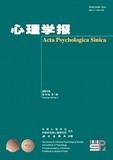Trust is a crucial part of interpersonal relationships within work environments. Previous research has revealed that feeling trusted, or “the perception that another party is willing to accept vulnerability to one’s actions,” by one’s supervisor benefits both subordinates and organizations in various ways such as enhancing organization-based self-esteem and improving individual and organizational performance. While extant research has provided insightful knowledge to help us understand the beneficial effects of feeling trusted, we know little about its potential drawbacks. We suggest that scholars may have overstated the benefits of feeling trusted and overlooked its potential costs. Thus, several important questions are arisen: When dose feeling trusted induce employees subsequent counterproductive work behavior (CWB), and Why? Drawing upon self-evaluation theory and trust literature, we propose that feeling trusted by their supervisors may promote employees’ psychological entitlement, which leads to subsequent CWB. Furthermore, we consider the perceived rarity of trust as a boundary condition and suggest that when employees perceive the rarity of trust is high, feeling trusted is more likely to make them feel psychologically entitled, thus leading to CWB.
To test our theoretical model, we conducted three studies, including two experiments (i.e., Study 1 and 2) and one multi-wave, multi-source field study (i.e., Study 3) among diverse samples. In Study 1, we invited 115 full-time employees through the alumni networks of several large universities in China to participate our experiment. Participants were randomly assigned to one of two experimental conditions: the feeling trusted condition (n = 58) versus the control condition (n = 57). Feeling trusted was manipulated by the critical incident technique. Each participant was required to recall and describe a recent interaction with their supervisor. Next, participants completed an ostensibly unrelated task (filler task) and reported psychological entitlement, manipulation check, and demographics. In Study 2, we recruited 145 full-time working adults as participants from the United States using Amazon’s Mechanical Turk. Participants first reported the perceived rarity of trust in their organizations. Then, they were randomly assigned to one of two experimental conditions (the feeling trusted condition [n = 73] versus the control condition [n = 72]) and were subjected to the same manipulation and questionnaire as those defined in Study 1. In Study 3, we employed a multi-wave, multi-source design to test our full model in a field setting using a Chinese employee sample. At Time 1, the employees reported feeling trusted, perceived rarity of trust, psychological entitlement, and demographics. Approximately one week later (Time 2), their supervisors were invited to rate subordinates’ CWB. The final sample included 187 employees from 60 workgroups.
The results of the studies revealed that feeling trusted positively influenced subordinates’ psychological entitlement, which in turn enhanced their subsequent CWB. Subordinates perceived rarity of trust moderated the effect of feeling trusted on psychological entitlement. Furthermore, subordinates perceived rarity of trust moderated the indirect effect of feeling trusted on CWB. That is, the positive indirect effect of feeling trusted on CWB via subordinates’ psychological entitlement was significant and positive when perceived rarity of trust was high and did not exist when perceived rarity of trust was low.
This research makes several important contributions. First, we challenge the consensus regarding the universally positive effects of trust by suggesting that feeling trusted may have the potential to induce subordinates CWB. In doing so, this research provides a more dialectical perspective in understanding the effects of feeling trusted. Second, not only do we examine the potentially negative effects of feeling trusted, but we also examine when and why this effect unfolds. By exploring the dynamics of feeling trusted, we answer Bare et al.’s call for more research on feeling trusted. Finally, this research contributes to CWB literature by identifying an important but neglected antecedent of CWB in the workplace. We suggested that beyond leaders’ negative behaviors (e.g., abuse and injustice), their positive behaviors (i.e., expressed trust) may lead to subordinates’ CWB.




